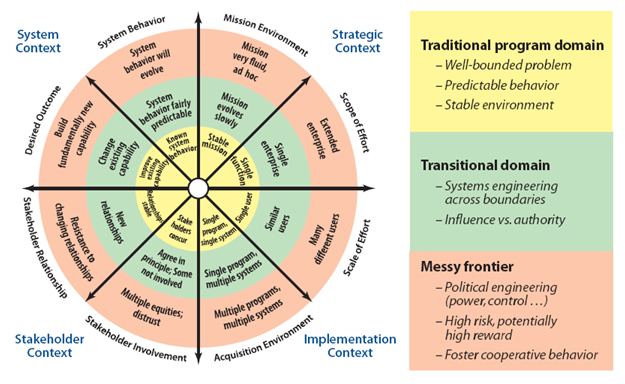Difference between revisions of "Assessing Individuals"
| Line 1: | Line 1: | ||
Introductory Paragraph(s) | Introductory Paragraph(s) | ||
| + | |||
This article describes how to assess SE competency needs for individuals. | This article describes how to assess SE competency needs for individuals. | ||
Revision as of 19:21, 30 June 2011
Introductory Paragraph(s)
This article describes how to assess SE competency needs for individuals.
Assessing Competency Needs
When developing a competency model for an organization, an initial decision is “make vs. buy.” If there is an existing SE competency model that fits the context and purpose, the organization might want to use the developed SE competency model directly. If existing models must be tailored or a new SE competency model developed, the organization might reference relevant literature on how to go about doing that.
Prior to understanding what SE competencies are needed, it is important to understand the situation in which the organization is embedded. As Figure 1 shows, MITRE has developed a framework characterizing different levels of systems complexity. (MITRE 2007, 1-12, pp. 1-12) This may help an organization frame which competencies are needed. An organization working primarily in the “traditional program domain” may need to emphasize a different set of competencies than an organization working primarily in the “messy frontier.” As an example, if the desired outcome improves existing capabilities, extensive technical knowledge in that specific area might be very important. If the desired outcome builds fundamentally new capability, technical knowledge in a broader set of areas might be useful. A higher level of competency in being able to balance stakeholder requirements might be needed if stakeholder involvement is characterized by multiple equities and distrust rather than when stakeholders concur.
Figure 1 MITRE Enterprise Systems Engineering Framework
The organization might consider both its current situation and its forward strategy. For example, if an organization has previously been working in a traditional systems engineering context (MITRE 2007) and the future strategy is to move into more enterprise systems engineering (ESE) work, the organization might want to develop a competency model both for what was important in the traditional SE context and for what is required for ESE work. An organization might also be moving to a different contracting environment where different competencies are more important, such as the ability to properly tailor the SE approach to “right size” the SE effort to balance cost and risk.
Once an organization has characterized the situation in which it is embedded, the next step is to understand which SE competencies are needed for that situation. The references from Table 5 explain various approaches to SE competency model development. Personality and social psychologists have also developed guidance on competency modeling.
References
Please make sure all references are listed alphabetically and are formatted according to the Chicago Manual of Style (15th ed). See the BKCASE Reference Guidance for additional information.
Citations
List all references cited in the article. Note: SEBoK 0.5 uses Chicago Manual of Style (15th ed). See the BKCASE Reference Guidance for additional information.
MITRE. 2007. Enterprise architecting for enterprise systems engineering. SEPO Collaborations. June 2007, SAE International (accessed August 2010).
Primary References
All primary references should be listed in alphabetical order. Remember to identify primary references by creating an internal link using the ‘’’reference title only’’’ (title). Please do not include version numbers in the links.
Additional References
All additional references should be listed in alphabetical order.
